| Planning | Program of Events | Promotion | Fundraisers | Supporters |
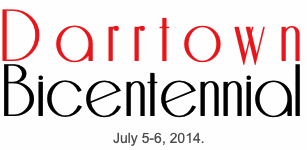
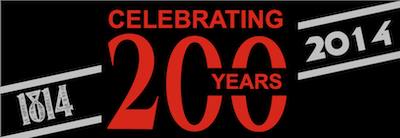

RESEARCH

This page includes information about:
The origin of the Darrtown Bicentennial
Approximately two dozen people gathered at the Hitching Post, in Darrtown, on September 10, 2011 to discuss the idea of organizing a Darrtown Bicentennial. That session is summarized below.

Following the September 10, 2011 meeting, seven individuals volunteered or were recruited to serve on a "Bicentennial Steering Committee" to gather ideas, acquire financial support, and organize events that would celebrate Darrtown's Bicentennial in the summer of 2014.
During the first year of planning, two of the original members stepped aside and their positions were filled by others. From mid- 2012 through the completion of the event, the Steering Committee consisted of those who appear in the following photo.
The Darrtown Bicentennial Purpose Statement
The Darrtown Bicentennial Steering Committee
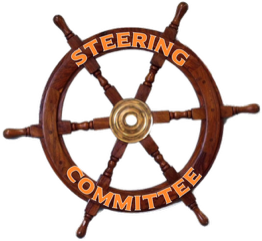
The Bicentennial Steering Committee adopted the following purpose statement, which served as a guide for determining how the Bicentennial would be organized and conducted.
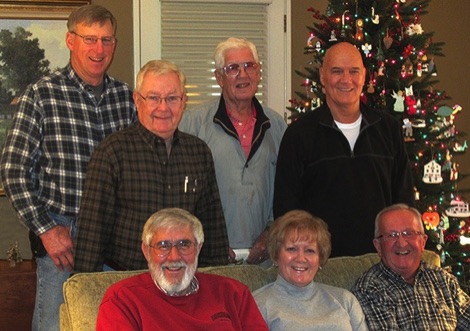
RIGHT:
The Darrtown Bicentennial Steering Committee
L-R: Seated: Jack Daniels, Betty Daniels, and Joe Pater.
Standing: Paul Gillespie, Ron Wiley, Dale Bufler, and Fred Lindley

Reports of the Steering Committee Meetings
Click the following link to access a PDF document that includes reports from the 47 meetings that were conducted by the Steering Committee - from September 2011, when the idea of a Darrtown Bicentennial was introduced to the public - through the July 5-6, 2014 weekend, when the Bicentennial was conducted - to the July 22, 2014 meeting, when the committee addressed "wrap-up" items.
In the interest of transparency, these reports were made available to the public, throughout the planning process, via Bicentennial newsletters and Facebook announcements.
See: Reports of Steering Committee meetings.
RIGHT: This image was taken at a gathering of the Bicentennial Steering Committee members and their mates, on March of 2023 at the Brio restaurant in Liberty Center, Ohio.
Click the following link to see an enlargement of the image.
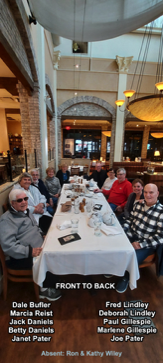
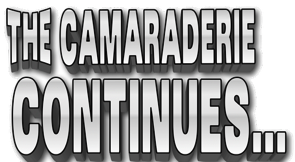
During the nearly three year-long Bicentennial project, the members of the Steering Committee experienced a sense of accomplishment and fellowship. Evidence of the bonding that occurred within the committee is reflected in the group's desire to continue getting together, after the 2014 event.
Introduction of idea: Ron Wiley, who led the group discussion, emphasized that a Bicentennial would require the effort and financial support of many people; far more than the two dozen who were in attendance today. To foster conversation, Ron distributed a sheet that listed issues that other communities faced when hosting bicentennial celebrations. Those items included: fund-raising, banking (of donated funds), insurance, traffic control, parking and shuttles, food, restroom facilities, tent, stage, chairs, public-address system, parades, antique vehicles/clubs, bands, and the involvement of local churches, fire department, township trustees. The sheet also provided space where those in attendance could volunteer (or suggest names of others) to serve on a Bicentennial Steering Committee - if the group decided to pursue the idea of hosting a Bicentennial event.
Ron then opened the floor for discussion, which led to the following:
Timing: Marna Evans asked about the length of the event; should it be one day, one week, or year-long? Those present favored a one-day or one-weekend event. Out of consideration for typical weather patterns, the group seemed to favor delaying a Bicentennial celebration from the actual bicentennial date (April 14) to sometime during the summer of 2014.
Funding: Sandy Jolivettee emphasized that funding will determine the size and/or complexity of the event. She suggested that, by starting now (in 2011), the organizers could use the 2012 year for fund raising and the details of the actual bicentennial could be better addressed, after the budget is established. Sandy and Ron Wiley both expressed knowledge of possible grant-writing for funds.
Public Awareness: Kirk Mee III asked the group to think about efforts/projects that would attract others to a Darrtown Bicentennial and Kirk suggested that people often attend food events, such as spaghetti dinners. Joe Pater suggested press releases to local newspapers and possibly involving the three local churches. Dale Bufler reinforced the point that Sandy Jolivette made earlier about raising funds first and designing the event after that.
Conclusion: By a show of hands, the group favored the idea of organizing a Steering Committee to pursue the organization of a Darrtown Bicentennial. Ron Wiley agreed to (1) serve as the Chair of the Steering Committee and (2) organize a Steering Committee of seven members - with consideration given to the names suggested by the those in attendance.
